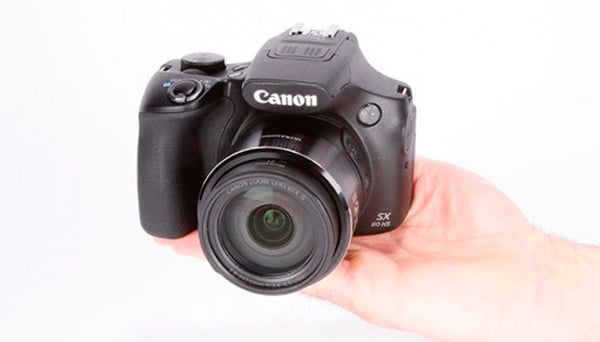Canon PowerShot SX60 HS Review - AF, Image Quality and Verdict Review
AF, Image Quality and Verdict
65x zoom... but it's all lens and no trousers
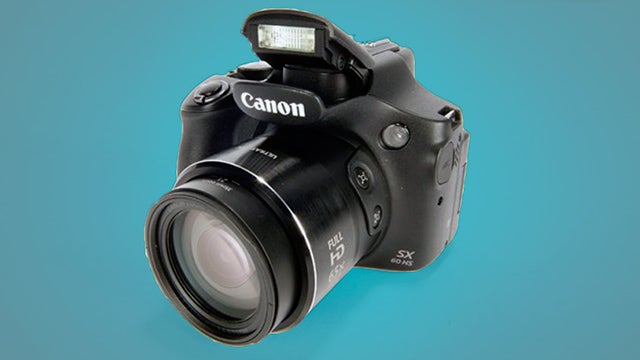
Sections
- Page 1 Canon PowerShot SX60 HS Review
- Page 2 Screen, EVF and Features Review
- Page 3 AF, Image Quality and Verdict Review
Canon PowerShot SX60 HS – Performance
The Canon SX60 HS also features an improved image processor, a variant of the DIGIC 6 unit. Speed is reasonable, but not that much more.
It takes around two seconds to start from cold to take your first shot, and while shooting speeds have improved since 2012’s SX50 HS, they’re not remarkable. With shooting JPEGs you can capture 6.4fps, or 3.4fps while using continuous autofocus. 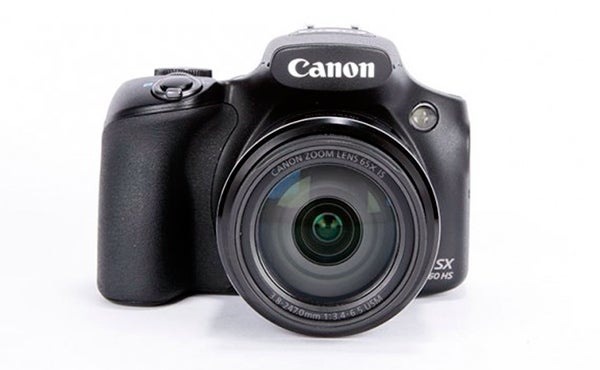
This drops a good deal when you switch to RAW capture, with about 2fps being the best you’ll get. That’s not enough to capture those action scenes with any degree of certainty.
We also found that while the Canon SX60 HS zoom motor is smooth, it’s a bit loud — no good if you want to shoot video.
Focusing speed is the key performance issue, though. While performance is reasonable in daylight, it gets a lot worse when there’s less light to play with.
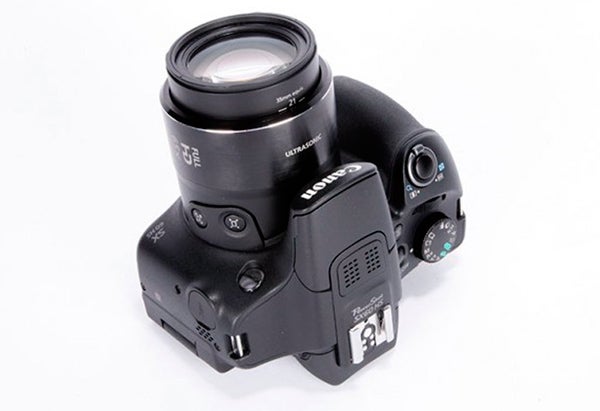
We found the Canon SX60 HS often takes a good 1.5 seconds to secure focus in lower light, and often failed to achieve focus at all in bad lighting. As a result we missed shots a good few times – not what you want in a supposed ‘all-function’ camera that costs £400 or more.
The fairly slow f/3.5-6.5 lens will be doing the PowerShot SX60 HS no favours on this front.
Canon PowerShot SX60 HS – Image Quality
The Canon SX60’s sensor, too, is nothing to get excited about. It’s a 16-megapixel 1/2.3-inch sensor, the same size used in entry-level compacts and fairly similar in size to some top phones. This is the optical illusion that bridge cameras create: they’re big, but the photographic brains at the centre are often tiny.
In scenes with high contrast in lighting, the limited dynamic range of the sensor becomes pretty obvious. It doesn’t have the chops to maintain highlights and shadow detail at the same time.
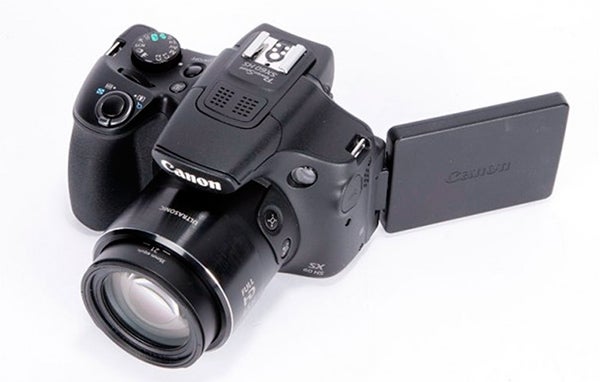
The Canon SX60 HS offers a few software modes that attempt to improve this: Dynamic Range Correction and Shadow Correct. These maintain highlights while bumping up shadow detail.
However, the results aren’t too hot. They often look quite artificial, and by increasing shadow detail the images tend to lose contrast. It also highlights the noise that the 1/2.3-inch sensor produces in darker areas. The photos are often simply not that good.
In better lighting, detail is fairly decent thanks to the 16-megapixel sensor, but when dealing with faraway subjects where the fine details are familiar, they can looked a little ‘painted’. This is likely down to the Canon SX60 HS using noise-reduction algorithms to try and clean up its shots.
Here are some samples:
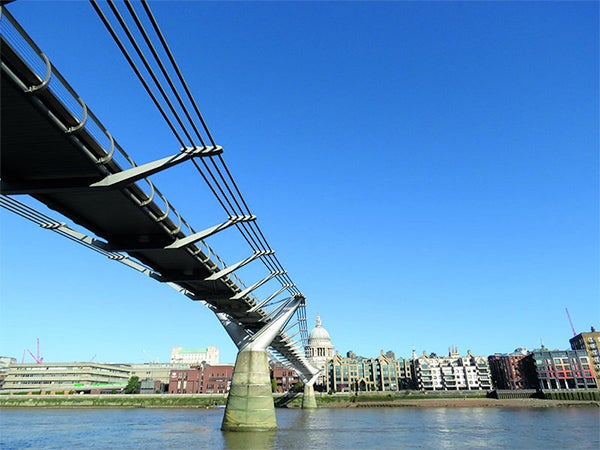
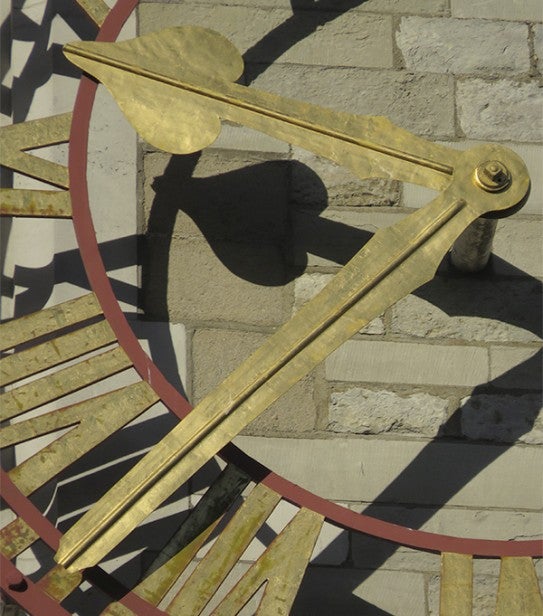

Noise is fairly low between ISO 100-400. Results at ISO 800 are noisier but still usable, while we recommend avoiding ISO 1600 and 3200 if possible. The results simply aren’t good.
Canon has actually reduced the ISO sensitivity ceiling in the Canon SX60 HS, from 6400 to a fairly low 3200 – probably an admission that its sensor isn’t really up to the task of shooting at such sensitivities.
Canon PowerShot SX60 HS – Video
The SX60 doesn’t offer 4K video, which is starting to make its way to more dedicated cameras – if not quite at the rate of smartphones. You can shoot at up to 1080p, 60 frames per second.
While the small sensor will have similar results for video as stills – don’t expect clean low-light footage – the Canon SX60 HS does at least have an external mic input so you can improve upon the sound captured by the built-in microphone. This is the first PowerShot camera to let you plug in a separate microphone, and that input comes via a proper hot shoe up top.

Should I buy the Canon PowerShot SX60 HS?
Bridge and superzoom cameras stay on shelves because people still buy them. However, we get the impression that buyers don’t always understand the limitations of the product they’re buying: zoom range doesn’t compensate for a slow lens and a tiny sensor.
In recent years we’ve seen some much higher-quality bridge cameras appear, such as the excellent Sony RX10 and Panasonic DMC-FZ1000. Even the cheaper Panasonic DMC-FZ200 is far more accomplished thanks to its constant f/2.8 aperture.
Things are getting better for superzooms. However, the Canon SX60 HS isn’t part of that revolution. A slow lens, small sensor and big price mean this is only a good buy if you need that extra zoom length and are going to shoot in daylight. Rivals like the Fujifilm X-S1 offer wider max apertures, which we think is more valuable than a bit of extra zoom.
Verdict
Slow AF and limited image quality make the Canon SX60 HS an uninspiring update to an outdated camera.
Next, read more Camera Reviews
Trusted Score
Score in detail
-
Value 6
-
Design 8
-
Features 7
-
Image Quality 6
-
Build Quality 8
-
Performance 6

